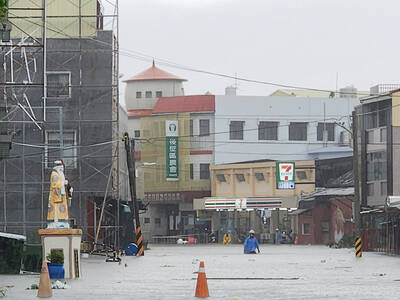US researchers have created a nanofiber textile that harvests energy from movement, paving the way for clothing that could one day power an iPod or other wearable electronic devices, a study published on Wednesday said.
Using the same mechanical principle as a self-winding watch, but on scale measured in billionths of a meter, tiny nanogenerators can scavenge "wasted" energy from sound waves, vibrations, or even the human heart beat.
The fibers, developed by a team of scientists at the Georgia Institute of Technology led by Zhong Lin Wang, are covered with pairs of zinc oxide nanowires that produce tiny pulses of electricity in response to friction.
"The two fibers scrub together just like two bottle brushes with their bristles touching," converting the mechanical motion into electrical energy, Wang said.
"Many of the devices could be put together to produce a higher output," he said.
This method of generating energy from friction is called the "piezoelectric effect."
The fibers could also be woven into curtains, tents or other structures to capture energy from wind motion, sound vibrations or other mechanical energy, said the study published in the UK journal Nature.
The human body contains many sources of energy that could drive nanogenerators, including blood flow pumped by the heart, exhalation from the lungs and walking.
Even the act of typing on a computer is a potential source of nano-scale energy.
Wang and his colleagues have made more than 200 of the mircroscopic nanogenerators. The fiber assemblies were each tested for 30 minutes to check durability and power production.
Other kinds of nanogenerators driven by scavenged energy aim to power biosensors to monitor a patient's glucose levels, strain sensors for bridges and environmental sensors to detect toxins.
There remains at least one significant problem before the nanofibers can become part of our daily wardrobes. Zinc oxide is sensitive to water, which means that clothes made from these fibers could never be washed, the study said.

Rainfall is expected to become more widespread and persistent across central and southern Taiwan over the next few days, with the effects of the weather patterns becoming most prominent between last night and tomorrow, the Central Weather Administration (CWA) said yesterday. Independent meteorologist Daniel Wu (吳德榮) said that based on the latest forecast models of the combination of a low-pressure system and southwesterly winds, rainfall and flooding are expected to continue in central and southern Taiwan from today to Sunday. The CWA also warned of flash floods, thunder and lightning, and strong gusts in these areas, as well as landslides and fallen

WAITING GAME: The US has so far only offered a ‘best rate tariff,’ which officials assume is about 15 percent, the same as Japan, a person familiar with the matter said Taiwan and the US have completed “technical consultations” regarding tariffs and a finalized rate is expected to be released soon, Executive Yuan spokeswoman Michelle Lee (李慧芝) told a news conference yesterday, as a 90-day pause on US President Donald Trump’s “reciprocal” tariffs is set to expire today. The two countries have reached a “certain degree of consensus” on issues such as tariffs, nontariff trade barriers, trade facilitation, supply chain resilience and economic security, Lee said. They also discussed opportunities for cooperation, investment and procurement, she said. A joint statement is still being negotiated and would be released once the US government has made

SOUTH CHINA SEA? The Philippine president spoke of adding more classrooms and power plants, while skipping tensions with China over disputed areas Philippine President Ferdinand Marcos Jr yesterday blasted “useless and crumbling” flood control projects in a state of the nation address that focused on domestic issues after a months-long feud with his vice president. Addressing a joint session of congress after days of rain that left at least 31 dead, Marcos repeated his recent warning that the nation faced a climate change-driven “new normal,” while pledging to investigate publicly funded projects that had failed. “Let’s not pretend, the people know that these projects can breed corruption. Kickbacks ... for the boys,” he said, citing houses that were “swept away” by the floods. “Someone has

‘CRUDE’: The potential countermeasure is in response to South Africa renaming Taiwan’s representative offices and the insistence that it move out of Pretoria Taiwan is considering banning exports of semiconductors to South Africa after the latter unilaterally downgraded and changed the names of Taiwan’s two representative offices, the Ministry of Foreign Affairs (MOFA) said yesterday. On Monday last week, the South African Department of International Relations and Cooperation unilaterally released a statement saying that, as of April 1, the Taipei Liaison Offices in Pretoria and Cape Town had been renamed the “Taipei Commercial Office in Johannesburg” and the “Taipei Commercial Office in Cape Town.” Citing UN General Assembly Resolution 2758, it said that South Africa “recognizes the People’s Republic of China (PRC) as the sole